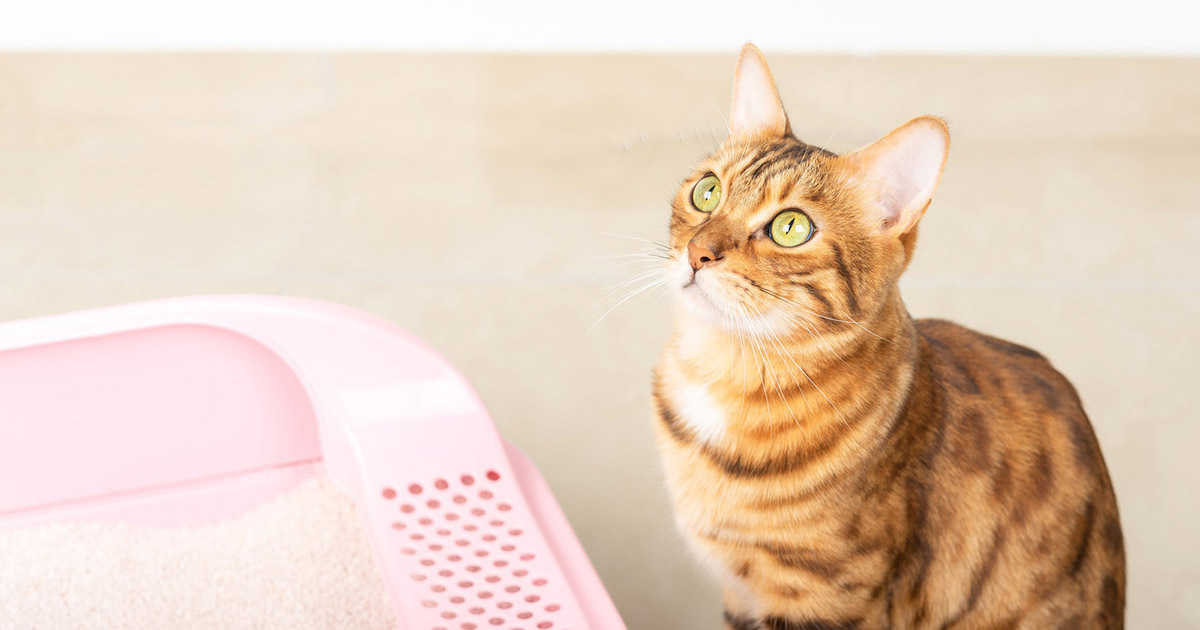Reasons You Should Never Flush Cat Poop Down Your Toilet - Important Facts
Reasons You Should Never Flush Cat Poop Down Your Toilet - Important Facts
Blog Article
Are you currently trying to find advice around How to Dispose of Cat Poop and Litter Without Plastic Bags?

Intro
As cat owners, it's important to bear in mind just how we take care of our feline pals' waste. While it may seem hassle-free to purge feline poop down the bathroom, this technique can have damaging effects for both the setting and human health and wellness.
Environmental Impact
Purging feline poop presents harmful pathogens and parasites right into the water system, presenting a substantial danger to aquatic ecosystems. These pollutants can negatively affect marine life and compromise water quality.
Wellness Risks
Along with environmental issues, flushing pet cat waste can additionally pose wellness threats to people. Cat feces may contain Toxoplasma gondii, a bloodsucker that can trigger toxoplasmosis-- a potentially severe illness, particularly for expectant females and people with weakened immune systems.
Alternatives to Flushing
Fortunately, there are more secure and a lot more responsible means to throw away cat poop. Consider the following options:
1. Scoop and Dispose in Trash
The most usual approach of getting rid of cat poop is to scoop it right into an eco-friendly bag and throw it in the garbage. Make sure to make use of a dedicated trash scoop and take care of the waste immediately.
2. Use Biodegradable Litter
Select naturally degradable pet cat trash made from materials such as corn or wheat. These trashes are environmentally friendly and can be safely gotten rid of in the garbage.
3. Bury in the Yard
If you have a backyard, consider hiding cat waste in a marked area far from vegetable yards and water sources. Make sure to dig deep enough to stop contamination of groundwater.
4. Install a Pet Waste Disposal System
Buy a family pet waste disposal system particularly designed for feline waste. These systems utilize enzymes to break down the waste, reducing smell and ecological impact.
Final thought
Responsible family pet ownership extends past giving food and shelter-- it also includes correct waste management. By avoiding purging cat poop down the bathroom and going with alternative disposal techniques, we can decrease our environmental impact and secure human wellness.
Why Can’t I Flush Cat Poop?
It Spreads a Parasite
Cats are frequently infected with a parasite called toxoplasma gondii. The parasite causes an infection called toxoplasmosis. It is usually harmless to cats. The parasite only uses cat poop as a host for its eggs. Otherwise, the cat’s immune system usually keeps the infection at low enough levels to maintain its own health. But it does not stop the develop of eggs. These eggs are tiny and surprisingly tough. They may survive for a year before they begin to grow. But that’s the problem.
Our wastewater system is not designed to deal with toxoplasmosis eggs. Instead, most eggs will flush from your toilet into sewers and wastewater management plants. After the sewage is treated for many other harmful things in it, it is typically released into local rivers, lakes, or oceans. Here, the toxoplasmosis eggs can find new hosts, including starfish, crabs, otters, and many other wildlife. For many, this is a significant risk to their health. Toxoplasmosis can also end up infecting water sources that are important for agriculture, which means our deer, pigs, and sheep can get infected too.
Is There Risk to Humans?
There can be a risk to human life from flushing cat poop down the toilet. If you do so, the parasites from your cat’s poop can end up in shellfish, game animals, or livestock. If this meat is then served raw or undercooked, the people who eat it can get sick.
In fact, according to the CDC, 40 million people in the United States are infected with toxoplasma gondii. They get it from exposure to infected seafood, or from some kind of cat poop contamination, like drinking from a stream that is contaminated or touching anything that has come into contact with cat poop. That includes just cleaning a cat litter box.
Most people who get infected with these parasites will not develop any symptoms. However, for pregnant women or for those with compromised immune systems, the parasite can cause severe health problems.
How to Handle Cat Poop
The best way to handle cat poop is actually to clean the box more often. The eggs that the parasite sheds will not become active until one to five days after the cat poops. That means that if you clean daily, you’re much less likely to come into direct contact with infectious eggs.
That said, always dispose of cat poop in the garbage and not down the toilet. Wash your hands before and after you clean the litter box, and bring the bag of poop right outside to your garbage bins.
https://trenchlesssolutionsusa.com/why-cant-i-flush-cat-poop/

We were made aware of that report on Don’t flush cat feces down the toilet through an associate on another web property. In case you liked our page if you please remember to pass it around. Kudos for your time. Visit us again soon.
Get An Estimate Report this page